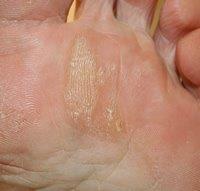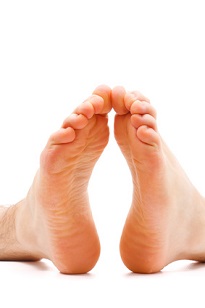What are Callus, Corns, Heel Cracks and Fissures?
We scarcely pay our feet a second thought when life behaves itself. In fact, we walk semi-autonomously with our legs and feet following the subconscious direction of our brains. While we are growing up our worst foot problems are standing on thorns and getting careless blisters. A callus is not even a distant possibility. Our skin is young and heals quickly. All is well. One day we wake up, rub our feet and suddenly they feel different. We discover we have a callus or corn developing despite our skin renewing itself. Are we getting old prematurely, we wonder. Will we have heel cracks and fissures next? These troubled our grandparents greatly. We recall them sanding away at them with a pumice stone.
Skin Changes as Our Feet Begin to Age
Nothing lasts forever except income tax, and love, or so they say. At the beginning of our youth, we are already on our journey. If we discover we have calluses, the chances are they began a long, long time ago. I wrote this post to highlight ways we can counter callus growths, corns, heel cracks and fissures almost before we know we have them.
How to Prevent a Callus Creeping Up
Calluses are unnaturally tough parts of skin that develop as a reaction to regular pressure or rubbing. They grow when the abuse is insufficient to develop blisters. So they are a form of benign auto-protection, but in reality an early warning sign. They can become sources of infection, and ulcers in the skin.
Since our feet take such a pounding, they are a natural invitation to calluses, although we do also find them on our palms and  knuckles. Walking and running barefoot are common causes. They are most likely to appear on dry skin, and among elderly people with less protective fatty tissue in their skin.
knuckles. Walking and running barefoot are common causes. They are most likely to appear on dry skin, and among elderly people with less protective fatty tissue in their skin.
Practical things that we can do are drying our feet after washing, and moistening them with foot cream. We can remove calluses with a sterile pumice stone. However our callus will keep returning until we change our lifestyle, and the things that cause it.
Calluses and Corns – Is There a Difference?
There are marked similarities, but there are also differences. Both are patches of dead skin our bodies throw up as defences against excessive rubbing and abrasion. By contrast, calluses are usually patches on the bottoms and sides of feet. While corns on the other hand are distinct lumps on upper hairless surfaces, usually toes.
Corns are broader at the top that at the bottom where they merge with our skin. Thus, they have a ‘stiletto heel’ effect that concentrates pain and pressure at that point. People with diabetes have a higher possibility of developing them since the disease affects the supply of nutrients to the skin.
Similar to a callus, it is better to prevent a corn developing, that treat it. If we change our lifestyle and shoes, it may shrink and disappear. Consult a podiatrist before applying corn plasters or corn removal cream. Do not attempt to remove a corn yourself. This is a job for a foot specialist or doctor.
What about Heel Cracks and Fissures
Cracked heals and fissures are the result of thick dry skin and hammering our feet. But there is a deeper side to them. The affected skin can split open and bleed if we allow it to become flaky, dry, and hard. Moreover, the cracks can become infections when raw skin contacts bacteria. So they are more than simply a cosmetic problem.
Heel cracks and fissures are commoner in dry climates. The weather encourages people to walk about barefoot, or in open-backed shoes, beach thongs, and sandals. The cracks easily reverse in the early stages with foot cream. Leave them too long and they can affect your mobility. Like corns, they need careful attention from diabetics with drier skins, and compromised immune systems.
Prevention and cure follow the same guidelines. Use a pumice stone in the shower to prevent thickening skin. Keep the skin on your feet moisturized to prevent it cracking. Sleep in socks over this treatment to turbo-charge healing. Finally, wear sensible shock-absorbing shoes to avoid reopening cracks.
There is life after callus growths, corns, heel cracks and fissures, provided we make the essential lifestyle changes.


Recent Comments